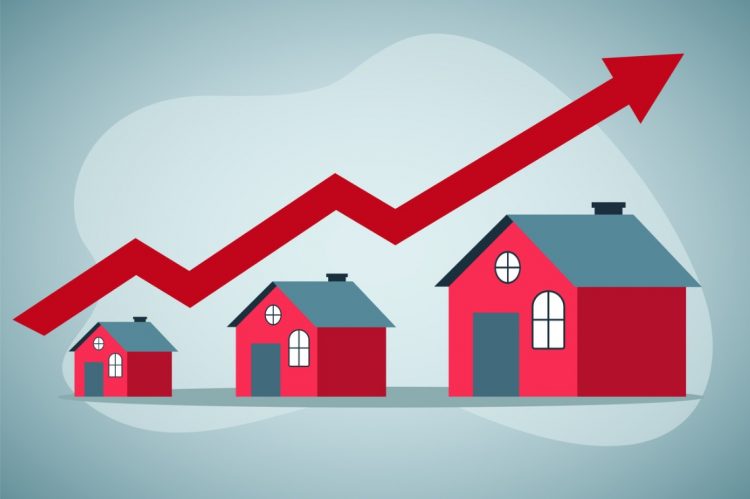Inflation and home prices: two large barriers for Americans in living their dream lives. While they both are very present issues, one has had a much stronger impact due to its drastic growth rate. Home prices have risen 2.4x faster than inflation since the 1960s, according to a new analysis from Clever Real Estate.
To track the trends between home prices and inflation, Clever performed an analysis of national, statewide, and citywide home prices over time based on data from the Federal Reserve, the Bureau of Labor Statistics and the Zillow Home Value Index.
The report found that if home prices had matched pace with inflation, the median home would cost only $177,500 today—compared to the $431,000 it actually costs.
To get more specific to recent years, Clever’s research found that home prices have increased twice as much as overall inflation since 2013.
Key highlights:
- The median home price increased 63% from 2013 to 2023, while overall inflation rose 31%.
- Home prices today are 24x higher than they were in 1963, while inflation is only 10x higher.
- Despite home prices having historically risen faster than inflation, inflation actually outpaced home prices in 2023.
- Millennials pay nearly twice as much as baby boomers did for homes in 1985. Today, the typical home cost is equivalent to about 6.3 years’ worth of median household income, compared to 3.5 years in the mid-1980s.
- For homes to be as affordable today as they were in 1985, the median household would need to earn $134,000 per year—nearly double the actual median of $74,580.
- By 2050, the median home would cost 8.4x the median household income if the current trajectory continues.
- Hawaii has seen the largest rise in home prices among all states since 2000, with the typical home value quadrupling to $831,808.
- Louisiana has seen the smallest price increase, though prices are still 86% higher than in 2000, up to $194,453 today.
- Of the 50 largest U.S. metros, Miami has seen the sharpest spike in home prices. The typical house in Miami is 4x more expensive today ($472,711) than it was in 2000.
- Cleveland has seen the smallest rise among the 50 largest metros—but there’s still been an increase of about $90,000 since 2000, with the typical home now valued at $211,496.
Major takeaway:
“As always, supply and demand is at play,” said Matt Brannon, a data writer at Clever Real Estate and author of the report. “When demand for consumer products rises, it’s usually not too complicated to scale up supply. If demand for clothing rises, clothing makers can increase factory output relatively quickly. But building one home takes six or seven months, making it harder for housing supply to catch up with demand.
Brannon continued, “It’s not necessarily a problem for home prices to outpace inflation. Otherwise, homeowners wouldn’t benefit much from home-value appreciation when selling. But the fact that home prices have risen so much faster than inflation makes homes widely unaffordable.”
For the full report, click here.












